Stossel Creek Case Study: Adaptive Restoration
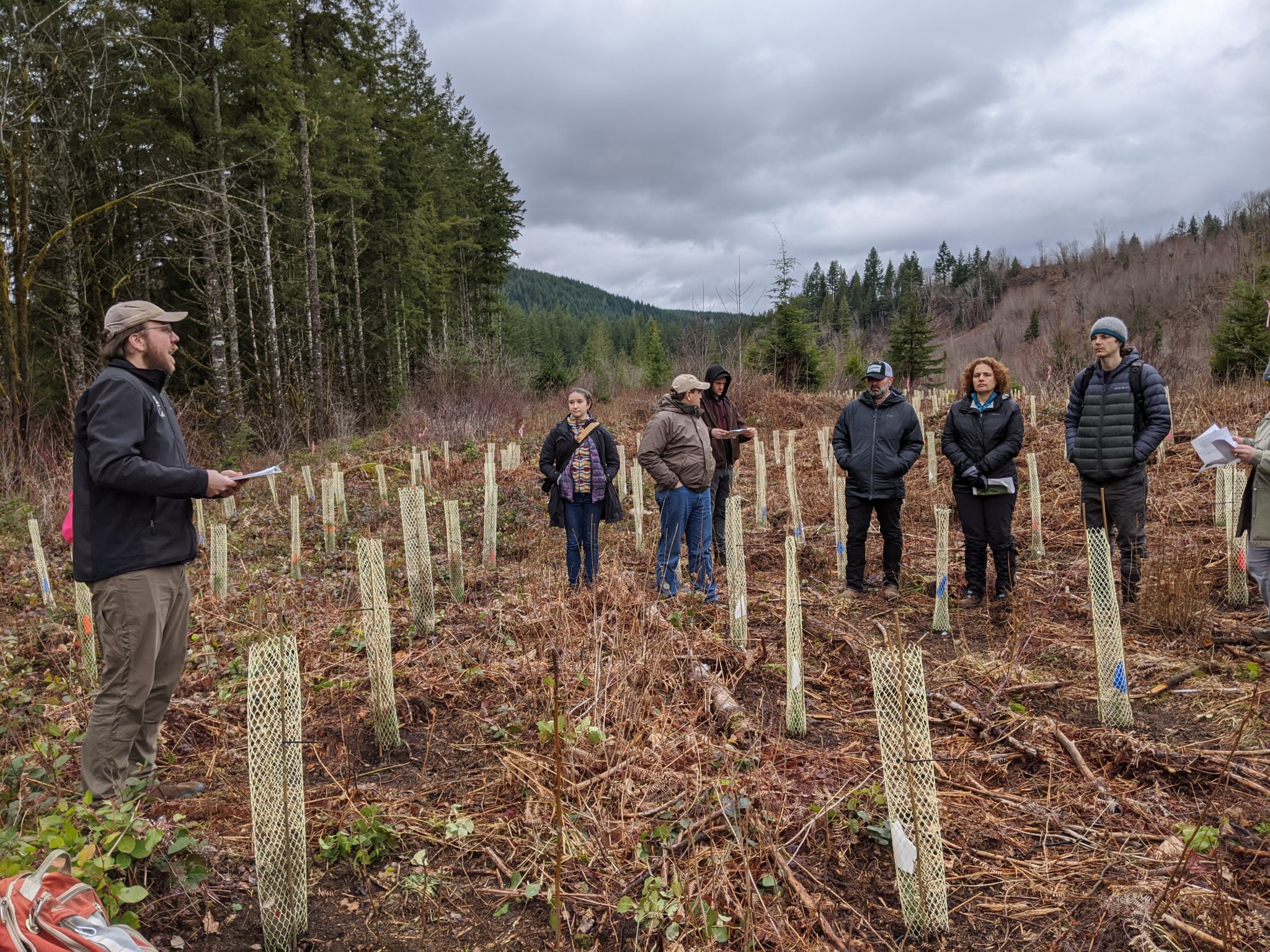
Climate Change in the Pacific Northwest
A changing climate can lead landowners to wonder how to increase the resilience of lands and forests to changing conditions around heat and moisture. The question is no longer if the climate is changing, but rather how fast and how much – and what the impact will be on local forests.
Our current forest management practices rely on some basic assumptions about climate, especially around temperature and precipitation. While projections will shift with time and vary by site, on average the future climate in the Pacific Northwest is expected to be warmer with drier summers than the present day. Current trees, adapted to the present and past climate, may struggle to survive in the new climate. Seedlings adapted to local conditions may be particularly vulnerable to shifting climate.
To manage for the expected future climate, forest managers can take several common-sense actions to build resilience and reduce stress in their forests. This includes reducing invasive species, maintaining lower tree density to reduce competition and drought stress, and planting more drought-tolerant species.
As part of that planting strategy, some managers have been sourcing seedlings from warmer and drier areas to grow trees already adapted to the expected future local climate. Overall, it’s important to focus on climate, not just location, when determining seed source origins. For example, potential seed sources adapted to the future climate of a particular site may be found at lower elevations in the same region where it is warmer and drier.
The case study below outlines the approach of a climate-adapted reforestation project and planting trial at Stossel Creek near Carnation, WA.
A two-page brief on the Stossel Creek restoration project is available here in English and Spanish. You can also find a three-year update on our blog.
Click here for a printable, PDF version of this page.
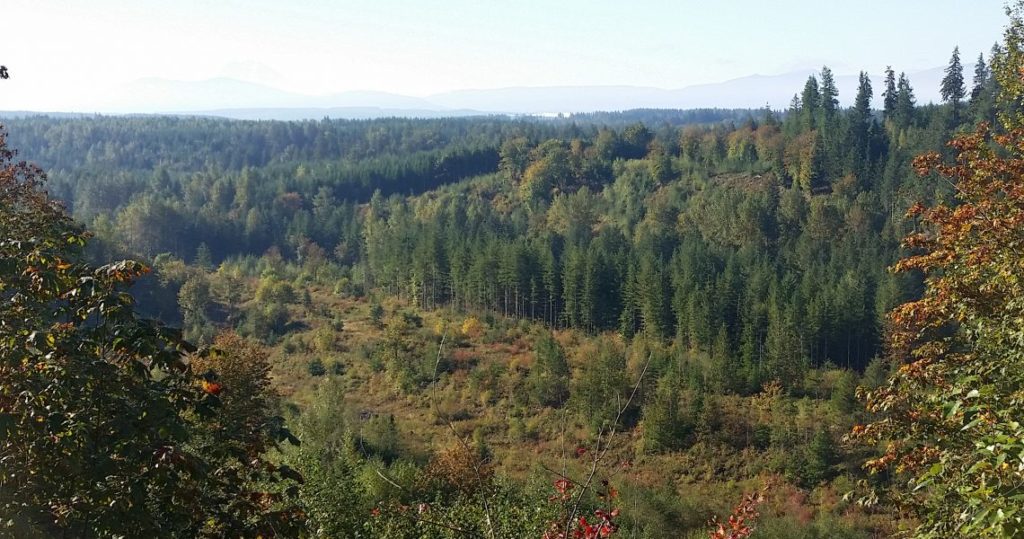
About Stossel Creek
The Stossel Creek site consists of 154 acres located in the Tolt watershed east of Seattle. Stossel Creek, which runs through the property, provides habitat for steelhead and salmon. The upland areas of the site provide forest and wetland habitat for many wildlife species.
The site was logged by a private landowner in 2012 and purchased by Seattle City Light in 2015 with funds intended to protect and restore quality salmon and steelhead habitat. The site, now dominated by early-seral forest and peppered with invasive species, is being reforested and restored as of 2020.
The Stossel Creek site is part of a complex mosaic of both private and public local land use and is surrounded on three sides by Marckworth State Forest. Some areas of the site were logged and not replanted, while other areas were not logged.
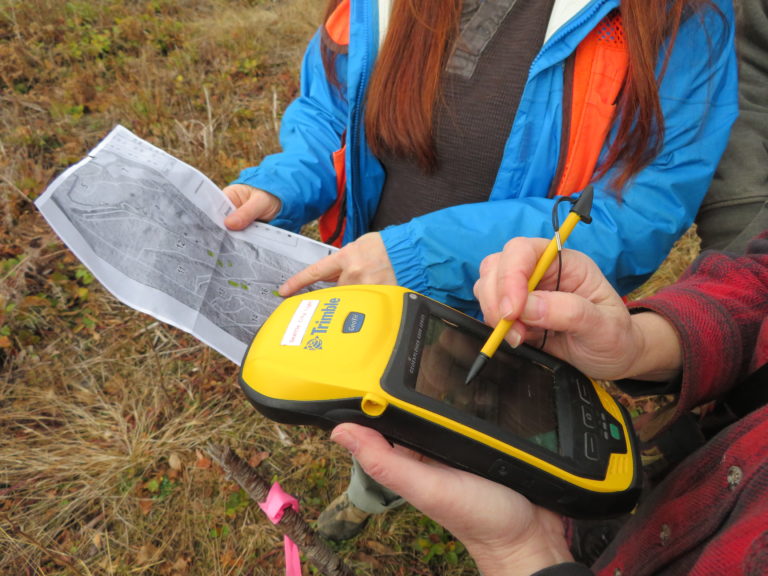
Project Description
Adaptive reforestation is a climate change adaptation strategy designed to reduce the watershed’s vulnerability to potential or expected impacts from climate change. Restoration of the Stossel Creek site is intended to increase its resilience to a changing climate by increasing both species and genetic diversity.
Natural regeneration is happening on all 154 acres, and active restoration is also taking place on 51 of those acres. Climate-adapted seedlings sourced from other regions are being interplanted with locally-sourced seedlings and trees that have naturally regenerated on the site.
Reforesting with a greater diversity of tree species and varieties adapted to a warmer, drier climate is intended to increase seedling survival and support the long-term objective for the site – a complex forest structure that will be more resilient to heat, drought, pests, disease, and wildfire. Through these actions, project managers are aiming to reduce the vulnerability of the watershed; they are hedging their bets for the future and thinking of long-term forest health.
The project includes a decade-long adaptive planting trial using seedlings sourced from warmer and drier climates. Trial plots, embedded within the overall planting plan, will be used to assess the viability of various species planted across the site, as well as the relative success of seven different species and seedlings from different sources. Monitoring the survival and growth of each species is a step towards gauging which species fare the best in this area over the long term. The planting trial is also meant to offer a test example for local landowners who may not have the time and space to run this type of trial themselves.
A road runs through the south section of the site and is expected to be decommissioned in the long term to minimize erosion and stream sedimentation. Sediment entering the creek from both the property and the road could harm steelhead and salmon. The restoration plan for the site assumes the road will be decommissioned; therefore, the replanting needs to be resilient to avoid future maintenance or replanting.
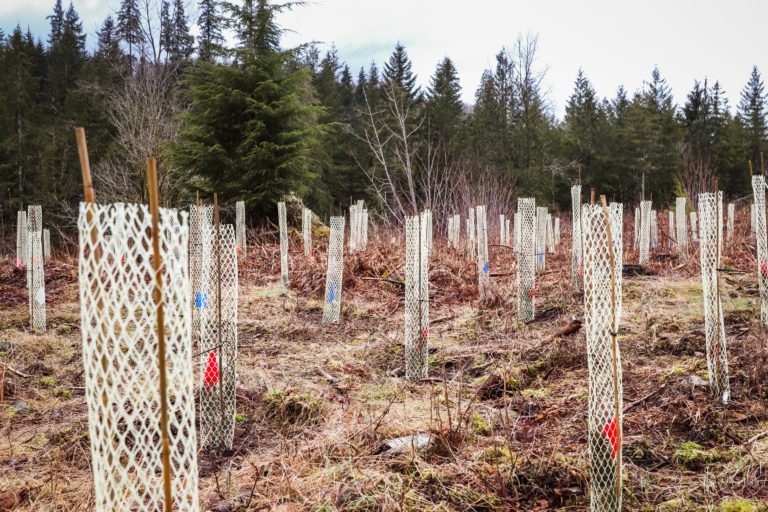
Planting Process
The site was divided into 19 units based on topography and vegetation. The locations of invasive species were mapped; before planting began, the most aggressive invasives were addressed through manual, mechanical, and chemical removal. A planting plan was drawn up based on soil, topography, and existing species within each unit. The site has a mosaic of vegetation types and both glacial outwash and volcanic soils.
A map of the Stossel Creek project site. The project site is divided into numbered units organized by vegetation type. See the table on the next page for an explanation of vegetation types.
Deciduous trees have shown more natural regeneration than conifers, and the replanting plan aims to grow more conifers and climate-adapted species to supplement this regeneration with more diversity.
To increase structural and seral stage complexity, the project retained naturally regenerating deciduous species and planted additional conifer species to establish a mix of conifer and deciduous forest types.
The long-term goal is to develop a late-seral forest with greater species diversity and long-term functional stability.
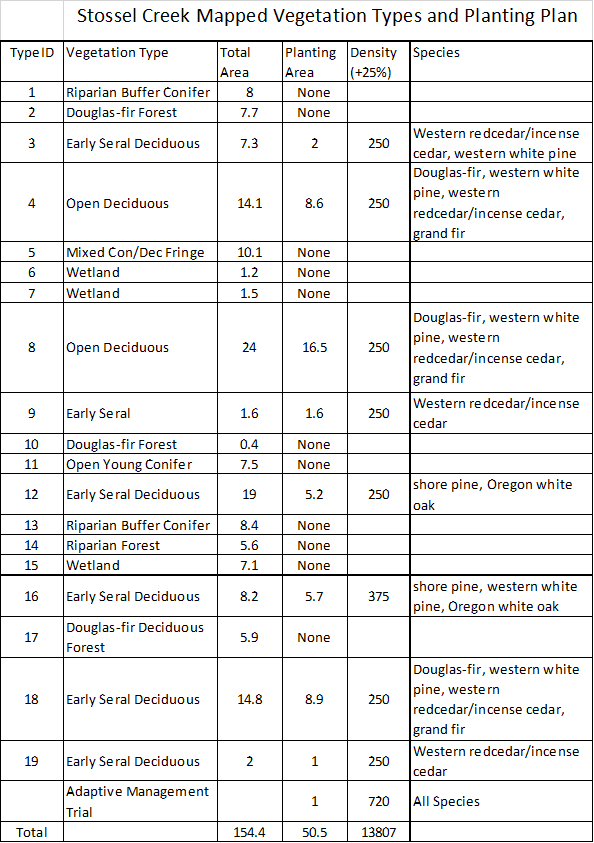
Vegetation types found at Stossel Creek. 19 unique vegetation types exist at the Stossel Creek Project Site.
The reforestation plan sought to increase biodiversity and structural diversity by establishing a mix of forest habitats including forests of conifer species, mixed conifer-deciduous species, and deciduous species on different areas of the site. This complexity is a significant departure from traditional reforestation practices that tend to simplify forest habitats in terms of structure and species.
The expectation is that this increases the forest’s functional redundancy – meaning, resilience that comes from multiple species from different taxonomic groups playing similar roles in the ecosystem. At the same time, the project is taking advantage of the establishment of native vegetation, which provides increased ecological functions at the local and landscape level.
There were three considerations for selecting climate-adapted tree species for the planting project:
- Replanting local dry-site adapted species, including western white pine, grand fir, Oregon white oak, and shore pine,
- Within-species assisted migration of Douglas-fir and western redcedar genotypes from warmer and drier areas, in addition to seedlings of both species sourced from western Washington,
- Range expansion of incense cedar from a southern Oregon seed source that aligns with future climate projections, to expand the current range of the species northward and augment species diversity.
The project used the Seedlot Selection Tool to identify areas with a current climate that matches the projected climate for Stossel Creek in the mid and late century. Project managers sorted seedlots by the average temperature of the coldest month (to reflect chilling requirements for Douglas-fir), growing season heat-moisture index, and a time range for the middle and end of the century.
The Seedlot Selection Tool identified southern Oregon and the Northern California coast as two well-matched climate analogs for the projected future climate of the Stossel Creek area. Additional seed sources for Douglas-fir and western redcedar were identified in these areas to augment the genetic diversity of local seed sources.
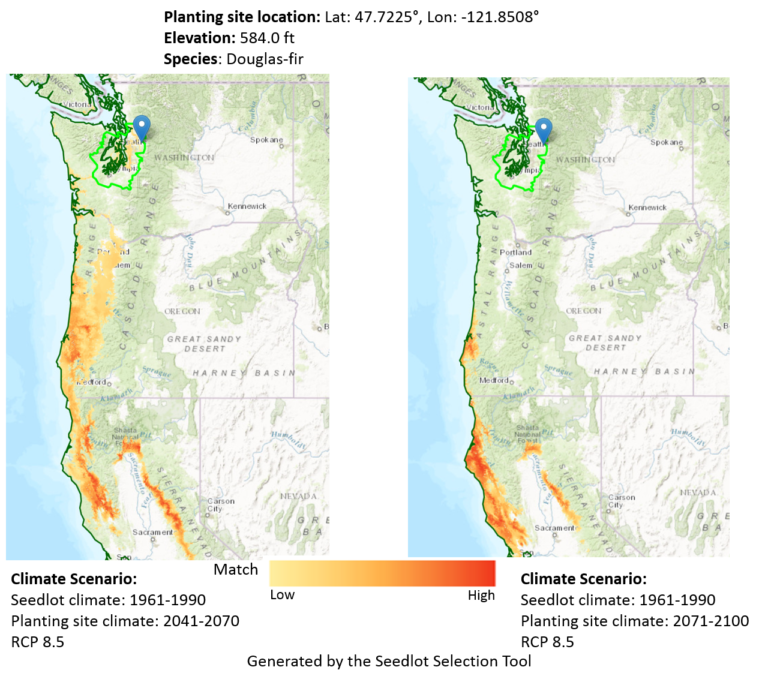
A snapshot from The Seedlot Selection tool. This shows areas that currently have climates similar to the climate projected for the Stossel Creek area from 2041-2070 (left) and 2071-2100 (right).
The project also aims to increase tree species diversity by planting coniferous and deciduous species not currently present at the site and sourced from warmer, drier climates where these species do commonly grow with Douglas-fir and western redcedar. The goal of planting these species is also to increase resilience to warmer temperatures and summer drought. The project includes range expansion of one species, incense cedar, which is typically found in California and southern Oregon.
The planting trial will allow for easier monitoring of survival and growth as a first step towards the long-term resilience goal of other species in the area. Some adjustments to the original plan had to be made based on seed stock availability.
Seedling Details
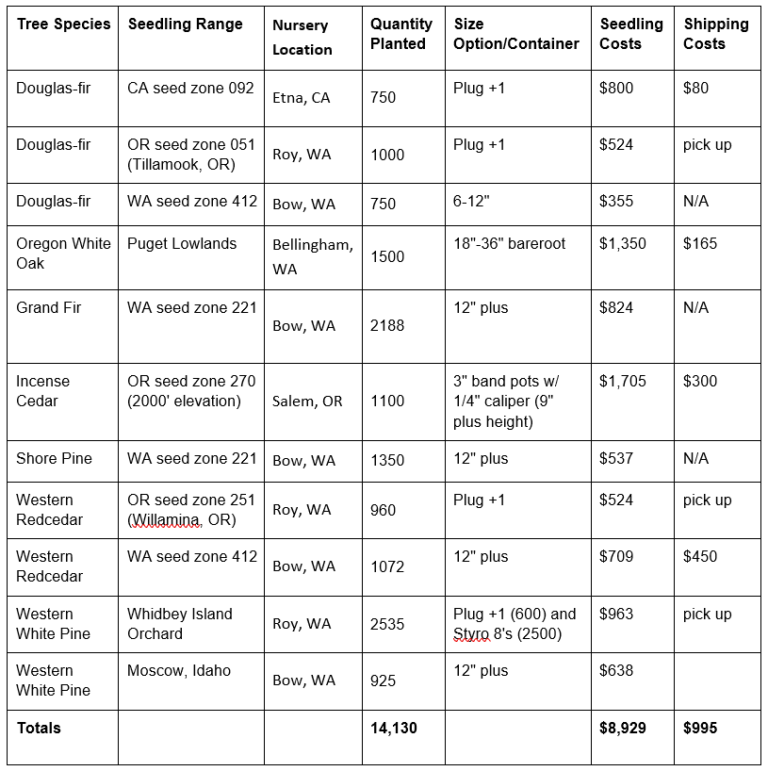
Table showing seedling source & price details. Seedlings for this project were sourced from a range of locations. Some of the locations have current climates similar to that expected for the Stossel Creek area in the future.
Sourcing seedlings was a logistical challenge, as there was no one-stop-shop for all sources and species. The project worked with five nurseries, which made logistics and timing more complicated, as availability, timing, and size of material on delivery varied by nursery.
The costs of the restoration planting materials were mostly similar to a non-climate adapted planting. The 14,130 tree seedlings were priced at $0.50 to $0.75 each, for a total of about $12,000 including shipping. Labor costs were about $40,000, in line with non-climate adapted planting costs, though there were additional labor costs for this project to conduct invasive species removal in advance of planting.
A majority of the seedlings (over 13,000 trees) were planted across the site. The planting crews aimed to plant these trees in clumps of 25 trees at eight-foot spacing, with some variance based on terrain. Clumped planting and interplanting among existing natural regeneration will result in greater spatial and structural diversity of the future forest.
Project managers embedded some photo monitoring plots for future long-term monitoring of forest dynamics. Photo monitoring plots were established in the planting areas to document vegetation growth over time. Each plot has a post labeled with a unique identification number and one-meter height mark on the post. Color photos of the post and its surrounding area will be taken each year at a distance of six meters (20 feet) from each of the four cardinal directions.
The restoration included 900 seedlings that were part of a planting trial to allow for controlled monitoring. These seedlings were planted in two identical blocks consisting of three plots each for a total of six planting plots. Each plot contained all ten seedling types, planted in randomized rows of 15 trees per row. The trial seedlings were planted closer together than average (about six feet apart) for replanting, as competition between the trees is expected to be low for the projected ten years of the trial remeasurements. The trial plantings all have plastic tubing (Vexar) to protect them from herbivory and to maintain consistency during the initial establishment of the seedlings.
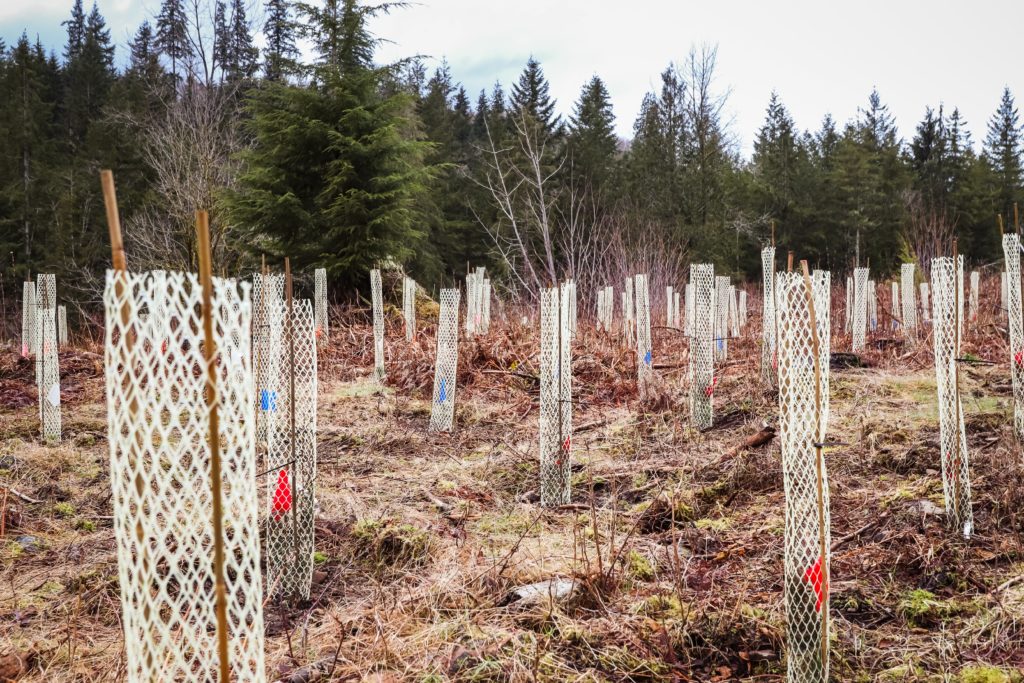
Example of a Planting Trial Plot Layout
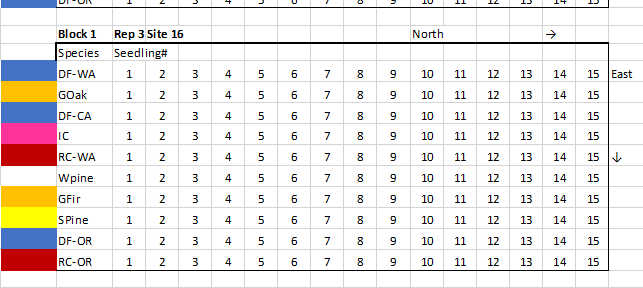
Example layout of a single plot. Three plots were planted next to each other, then replicated nearby, for a total of 6 plots. The order of rows was randomized for each plot.
The regular block layout was intended to facilitate monitoring, and locations of all trial plantings were documented for future monitoring. Long-term monitoring is intended to be performed in partnership between Seattle City Light, Seattle Public Utilities and Mountains to Sound Greenway Trust, and will take place one, three, five, and ten years after the trial planting to measure how trees perform by species and seed source. Tree survival, growth, and vigor will be monitored and compared between the trial trees.
Lessons about early establishment of trees in a changing climate is the critical information the project hopes to provide in the short-term. In ten years, project managers expect to be applying the information learned from the trial in other locations as part of continued restoration efforts in a changing climate.
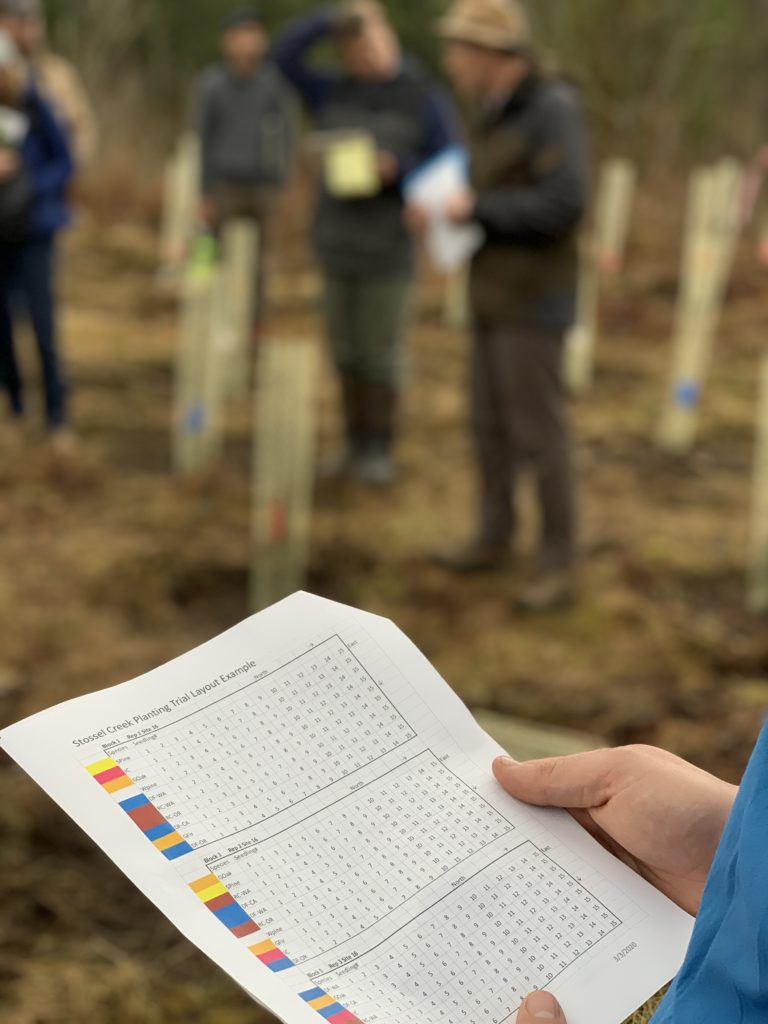
Lessons Learned and Recommendations for Similar Projects
- Land managers are already performing numerous actions that they don’t always explicitly label as ‘climate adaptation’ but are nevertheless a key part of climate adaptation strategies. These actions include extending watering periods, using more drought-tolerant species, expanding seed zones, and reducing tree densities. Recognizing the role of these practices in creating more resilient forests can help forest managers plan and implement more comprehensive approaches to forest restoration.
- The Seedlot Selection Tool, in combination with local knowledge, is an effective tool to help land managers identify seed sources adapted to future climate at the planting location.
- So far partners have heard few concerns on the concept of assisted migration, but it remains an issue that benefits from a cautious approach and clear communications.
- Availability of selected species and seed sources can be challenging, and if a particular species or seed source needs to be planted, managers may need to contract with a nursery to grow the desired trees from seed. If there is sufficient lead time (2 to 3 years), it would be ideal to contract with a single nursery to request specific species and reduce logistical issues. As mentioned above, this project included adjustments to the species and sources based on availability from providers.
- If a planting project is selecting specific species and seed zones from outside its close local region, it may be necessary to order material from new nurseries two to three years in advance. Creating relationships with these out-of-area nurseries may facilitate the ease of climate-adapted planting. When working with multiple sources and new providers, availability of species, timing of delivery, and other factors compounded the project’s logistical complexity.
- Concerns remain on how well the new trees sourced from warmer and drier climates will survive cold snaps, as natural swings in temperature will still occur even as the average temperatures increase.
- Monitoring is an added cost and a long-term commitment; project managers need to consider ways to conduct practical monitoring to understand if planting trees from different seed zones increases survival in the short-term and resilience in the long-term. Examples include marking differently, photo point records, and GIS mapping of trees from different zones.
- The Stossel Creek site was fortunate to have limited presence of invasive species; other sites may have notable additional costs related to invasive species removal to improve the chances of survival of new tree species.
- Contracting for a cultural survey delayed the initial planting start date. Contracting of any kind can take time to put in place, so plan accordingly and start the process as soon as possible.
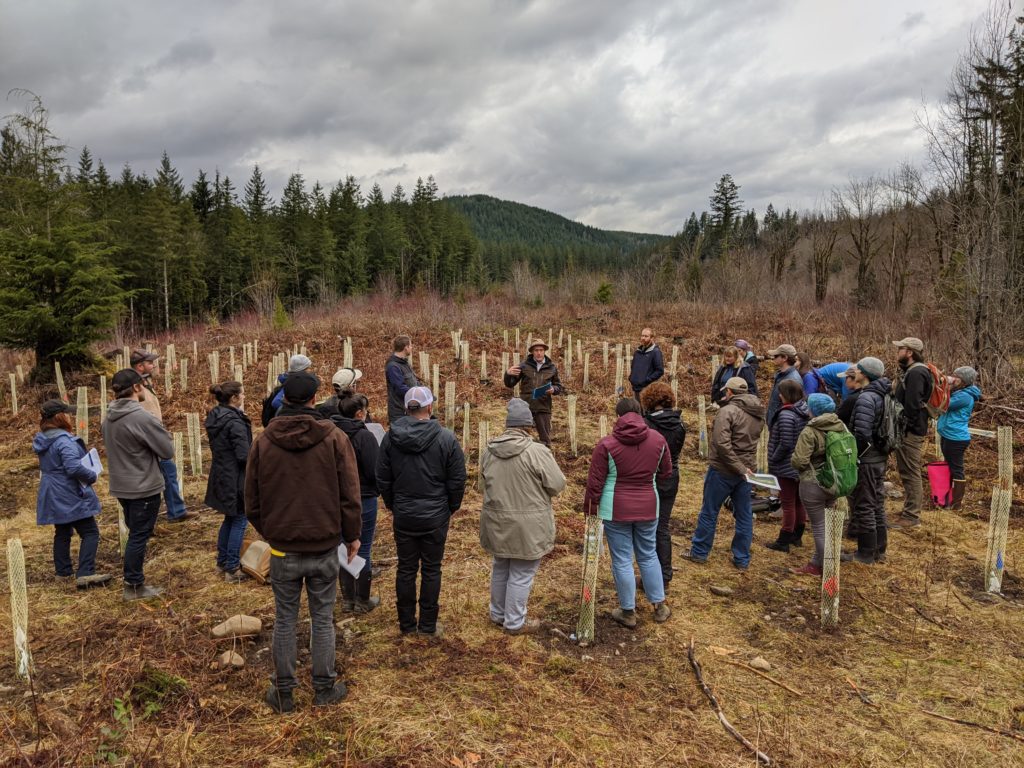
Further Resources
Species Potential Habitat Tool: https://specieshabitattool.org/spht/
Seedlot Selection Tool: https://seedlotselectiontool.org/sst/
About This Project
The project was funded by a grant from the Climate Adaptation Fund of the Wildlife Conservation Society, established by a grant to WCS from the Doris Duke Charitable Foundation; funds from the City of Seattle; and Carter Subaru. It’s being implemented by Mountains to Sound Greenway Trust, Northwest Natural Resource Group, Seattle City Light, and Seattle Public Utilities.
For further information, please contact:
Rowan Braybrook | Director of Programs, Northwest Natural Resource Group | rowan@nnrg.org

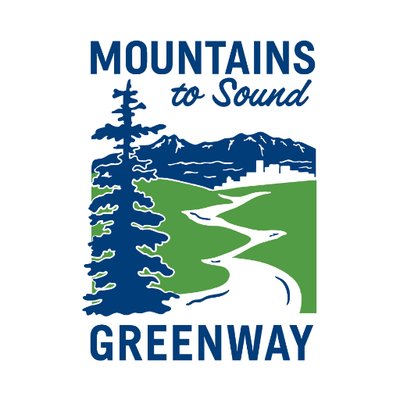



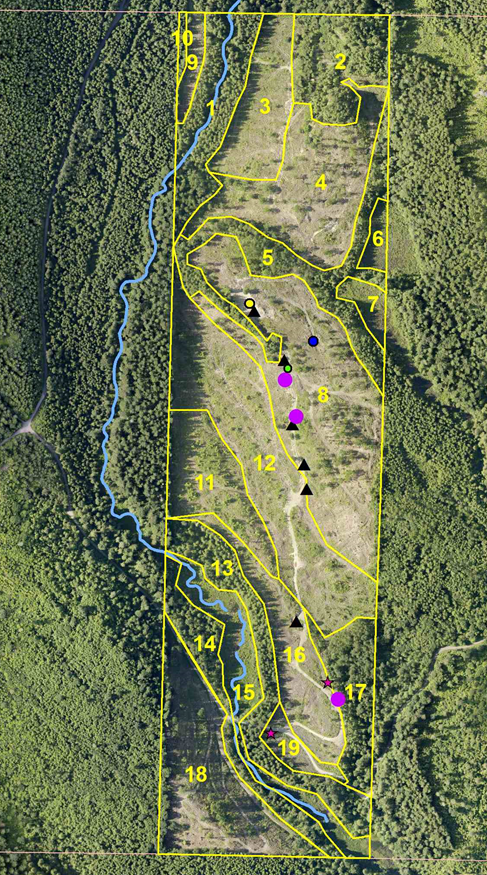
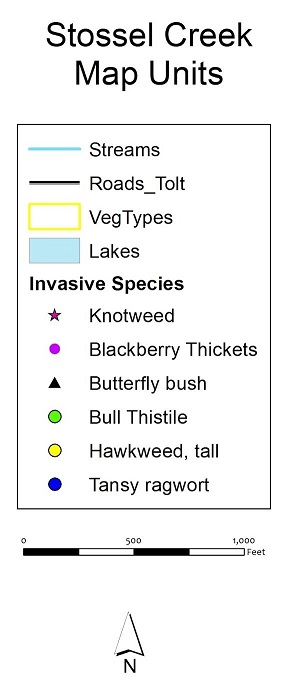
Leave a Reply